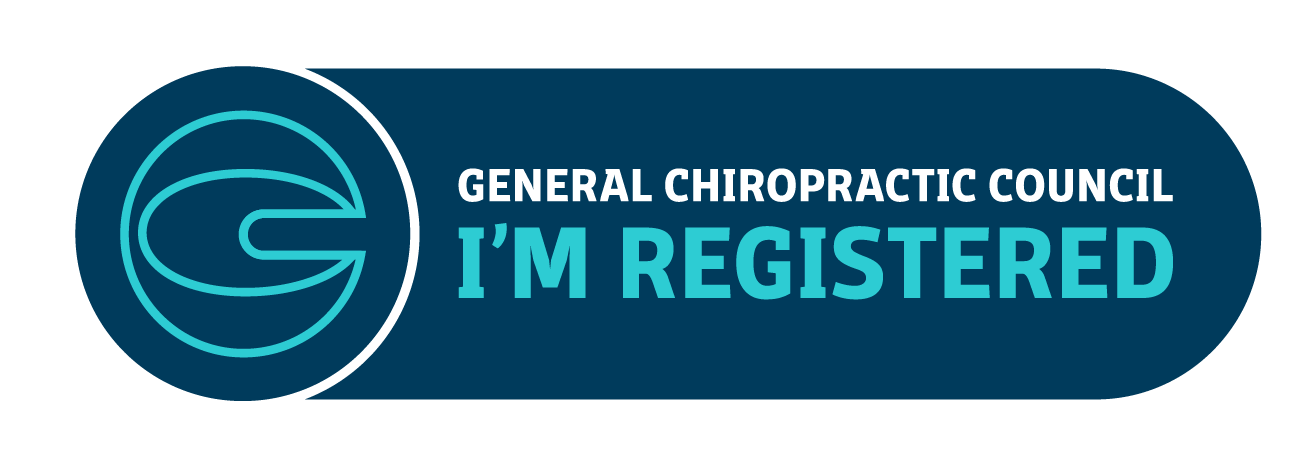Give us a Call on 07939 247 943
Understanding the Connection Between Neck Pain and Headaches: A Chiropractic Perspective
Neck pain and headaches are two of the most common complaints people experience, and for many, these issues are closely linked. Whether it's the result of poor posture, stress, or an underlying medical condition, the relationship between neck pain and headaches is well-documented, and chiropractic care offers an effective, non-invasive solution to address the root causes of these problems.
In this blog, we’ll explore how neck pain can contribute to headaches, the types of headaches commonly associated with neck issues, and how chiropractic care can provide relief by targeting the source of the pain.
The Connection Between Neck Pain and Headaches
The neck, also known as the cervical spine, is a delicate and complex structure that supports the weight of your head and allows for its movement. It consists of vertebrae, discs, muscles, ligaments, and nerves that work together to keep your head balanced and your neck flexible.
However, when there is dysfunction in the cervical spine—whether due to poor posture, muscle strain, joint dysfunction, or injury—it can lead to pain that radiates into other areas, particularly the head. This is because the nerves and muscles in the neck are closely connected to the nerves that transmit pain signals to the head. As a result, many people who experience neck pain also suffer from headaches, especially tension headaches and cervicogenic headaches (headaches that originate from the neck).
Common Types of Headaches Linked to Neck Pain
1. Tension Headaches
Tension headaches are the most common type of headache, and they are often associated with stress and muscle tension in the neck and shoulders. These headaches typically feel like a dull, aching pressure around the head, and they may be accompanied by tenderness in the neck and shoulders. Prolonged sitting, poor posture, and working at a computer for long hours can contribute to muscle tightness in the neck, leading to tension headaches.
2. Cervicogenic Headaches
Cervicogenic headaches are directly caused by issues in the cervical spine, such as dysfunctional vertebrae or irritated nerves. These headaches typically begin in the neck and radiate to the back of the head, temples, or behind the eyes. People with cervicogenic headaches may experience reduced range of motion in the neck and tenderness in the neck and upper back. Unlike tension headaches, cervicogenic headaches are not primarily caused by muscle tension but by underlying joint or nerve dysfunction.
3. Migraines
While migraines are not always directly linked to neck pain, many migraine sufferers report neck discomfort as a trigger or symptom. Research suggests that nerve irritation or inflammation in the cervical spine can contribute to the onset of migraines, particularly in people who are prone to neck issues. In some cases, chiropractic care can help reduce the frequency and severity of migraines by improving spinal alignment and relieving nerve pressure.
Causes of Neck Pain and Headaches
Several factors can contribute to neck pain and headaches, including:
1. Poor Posture
One of the leading causes of neck pain and associated headaches is poor posture, especially in today’s digital age. Many people spend hours hunched over computers, smartphones, or other devices, leading to "text neck" or forward head posture. This posture strains the muscles and ligaments in the neck, causing pain and tension that can trigger headaches.
2. Muscle Strain
Overuse of the neck muscles, such as from repetitive movements or holding the head in an awkward position for long periods, can lead to muscle strain. This strain can cause tension in the neck and shoulders, which often contributes to tension headaches.
3. Cervical Spine Dysfunction
When the vertebrae in the cervical spine restricted or dysfunctional, it can cause nerve irritation and muscle imbalances that lead to neck pain and headaches.
4. Stress
Emotional and physical stress can cause muscles in the neck and shoulders to tighten, leading to pain and tension headaches. Stress also contributes to poor posture, which can exacerbate neck pain.
5. Injuries
Neck injuries, such as whiplash from a car accident or sports injury, can cause damage to the cervical spine and surrounding soft tissues. This damage can result in chronic neck pain and headaches, especially if left untreated.
How Chiropractic Care Can Help
Chiropractic care focuses on diagnosing and treating musculoskeletal disorders, particularly those related to the spine. Chiropractors are trained to identify the root cause of neck pain and headaches, rather than simply treating the symptoms. Through a combination of spinal adjustments, soft tissue therapy, and lifestyle recommendations, chiropractic care offers a holistic approach to managing and alleviating neck pain and headaches.
1. Spinal Adjustments
Chiropractors use precise spinal adjustments to treat any restrictions the vertebrae in the cervical spine, reducing irritation and improving joint function. By restoring proper alignment, chiropractic adjustments can relieve the pressure on nerves that may be contributing to headaches. In the case of cervicogenic headaches, spinal adjustments are particularly effective in addressing the underlying dysfunction in the neck.
2. Soft Tissue Therapy
In addition to spinal adjustments, chiropractors may use soft tissue therapies, such as myofascial release, or trigger point therapy, to relieve muscle tension and improve movement in the neck and shoulders. These therapies can help reduce the muscle tightness that often leads to tension headaches and neck pain.
3. Postural Correction
Poor posture is a significant contributor to both neck pain and headaches, and chiropractors can provide guidance on how to improve posture to prevent future discomfort. This may involve exercises to strengthen the muscles that support proper alignment, as well as ergonomic recommendations for workstations and daily activities.
4. Lifestyle Advice
Chiropractors take a holistic approach to health and may offer advice on lifestyle factors that contribute to neck pain and headaches. This can include recommendations for stress management, hydration, and exercise to support overall spinal health.
5. Exercises and Stretching
Chiropractors often provide personalised exercise and stretching routines designed to strengthen the neck muscles, improve flexibility, and reduce the risk of future pain. These exercises can also help patients manage and prevent headaches by promoting better posture and reducing muscle tension.
Preventing Neck Pain and Headaches
While chiropractic care can provide significant relief for neck pain and headaches, prevention is always the best strategy. Here are a few tips to help prevent these issues from occurring:
- Maintain good posture: Be mindful of your posture, especially when sitting at a desk or using electronic devices. Keep your head aligned with your spine, and avoid slouching or leaning forward for extended periods.
- Take breaks: If you work at a computer or sit for long periods, take regular breaks to stretch and move around. This can help reduce tension in the neck and shoulders.
- Stay active: Regular physical activity can help keep your muscles strong and flexible, reducing the risk of neck pain and headaches.
- Manage stress: Incorporate stress-reducing activities like meditation, yoga, or deep breathing exercises into your daily routine to prevent tension from building up in your neck and shoulders.
Conclusion
Neck pain and headaches are often interconnected, and chiropractic care offers a natural, drug-free approach to addressing both conditions. By targeting the root causes of neck pain—whether it’s poor posture, muscle strain, or spinal misalignment—chiropractic treatments can provide lasting relief and improve overall well-being.
If you’re struggling with neck pain and headaches, consider consulting a chiropractor to explore treatment options that can help you get back to living a pain-free life.
BLOG



BUSINESS HOURS
MONDAY
TUESDAY
WEDNESDAY
THURSDAY
FRIDAY
SATURDAY
SUNDAY
2:00PM - 7:00PM
9:00AM - 7:00PM
2:00PM - 7:00PM
9:00AM - 7:00PM
9:00AM - 5:00PM
CLOSED
CLOSED
STAY CONNECTED
07939 247 943
hello@gryffechiropractic.com
Stay Connected with Gryffe Chiropractic!
Sign up for our newsletter and be the first to receive:
✅ Expert Chiropractic tips & advice
✅ Updates on clinic news & events
Simply enter your details below to subscribe!
Contact Us
We will get back to you as soon as possible
Please try again later
BUSINESS HOURS
MONDAY
TUESDAY
WEDNESDAY
THURSDAY
FRIDAY
SATURDAY
SUNDAY
2:00PM - 7:00PM
9:00AM - 7:00PM
2:00PM - 7:00PM
9:00AM - 7:00PM
9:00AM - 5:00PM
CLOSED
CLOSED
STAY CONNECTED
07939 247 943
hello@gryffechiropractic.com
Stay Connected with Gryffe Chiropractic!
Sign up for our newsletter and be the first to receive:
✅ Expert Chiropractic tips & advice
✅ Updates on clinic news & events
Simply enter your details below to subscribe!
Contact Us
We will get back to you as soon as possible
Please try again later
BUSINESS HOURS
MONDAY
TUESDAY
WEDNESDAY
THURSDAY
FRIDAY
SATURDAY
SUNDAY
2:00PM - 7:00PM
9:00AM - 7:00PM
2:00PM - 7:00PM
9:00AM - 7:00PM
9:00AM - 5:00PM
CLOSED
CLOSED
STAY CONNECTED
07939 247 943
hello@gryffechiropractic.com
Stay Connected with Gryffe Chiropractic!
Sign up for our newsletter and be the first to receive:
✅ Expert Chiropractic tips & advice
✅ Updates on clinic news & events
Simply enter your details below to subscribe!
Contact Us
We will get back to you as soon as possible
Please try again later
All Rights Reserved | Gryffe Chiropractic
Developed by Aitken Design
Bringing Visions to Life
All Rights Reserved | Gryffe Chiropractic
BUSINESS HOURS
Monday
Tuesday
Wednesday
Thursday
Friday
Saturday
Sunday
2:00 PM - 7:00 PM
9:00 AM - 7:00 PM
2:00 PM - 7:00 PM
9:00 AM - 7:00 PM
9:00 AM - 5:00 PM
CLOSED
CLOSED
Monday
Tuesday
Wednesday
Thursday
Friday
Saturday
Sunday
9:00 am - 6:00 pm
9:00 am - 6:00 pm
2:00 pm - 7:00 pm
9:00 am - 1:00 pm
9:00 am - 5:00 pm
*10:00 am - 12:00 pm
Closed






